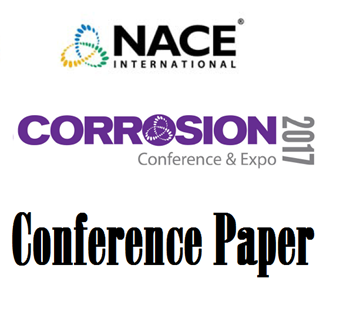Search
Individual Conference Papers
View as
Sort by
Display
per page
Electrochemical Noise vs. Salt Spray Tests: Is There Room For a Faster Corrosion Resistance Evaluation?
Product Number:
51323-18837-SG
Publication Date:
2023
$20.00
Electrochemical Parameters of Aluminum Oxide Film in Situ During Anodization of Aluminum by White light-Optical Interferometry
Product Number:
51319-12837-SG
Publication Date:
2019
$20.00
Electrochemical Studies Of Stainless Steels In Hanford Effluent Treatment Facility Environments
Product Number:
51321-17001-SG
Publication Date:
2021
$20.00
Electrochemical Testing Of Additive Manufactured Ti6al4v And Niti Materials In A Biological Fluid Environment
Product Number:
51321-16540-SG
Publication Date:
2021
$20.00
Electrochemical Testing To Predict Corrosion Performance on Various Aluminum Alloys
Product Number:
51321-16292-SG
Publication Date:
2021
$20.00
Electrochemistry of Mackinawite Electrodes in Sour Aqueous Solutions
Product Number:
51317--9319-SG
ISBN:
9319 2017 CP
Publication Date:
2017
$20.00
Electrode Tool Logging Approaches for Casing Inner Coating Monitoring
Product Number:
51320-14795-SG
Publication Date:
2020
$20.00
Electrodeposited Nanolaminar Zinc-Nickel Alloy Coatings – Analysis of Advanced Corrosion Resistance Performance
Product Number:
51323-19204-SG
Publication Date:
2023
$20.00
Electrodeposited Zinc Based Plating on Premium OCTG Connections as an Alternative to Storage and Running Dope: Corrosion Performance evaluation.
Product Number:
51319-13274-SG
Publication Date:
2019
$20.00
Electrodeposition of Aluminum on a Stainless Steel Substrate from Ionic Liquids
Product Number:
51319-13591-SG
Publication Date:
2019
$20.00
Electrolessly Coated Optical Fibers for Distributed Corrosion Monitoring
Product Number:
51319-13499-SG
Publication Date:
2019
$20.00
Electronic Inspection Equipment For A Field Painting Project
Product Number:
51218-087-SG
Publication Date:
2018
$20.00












